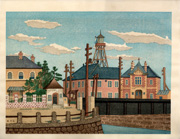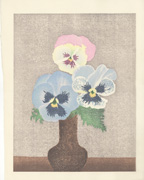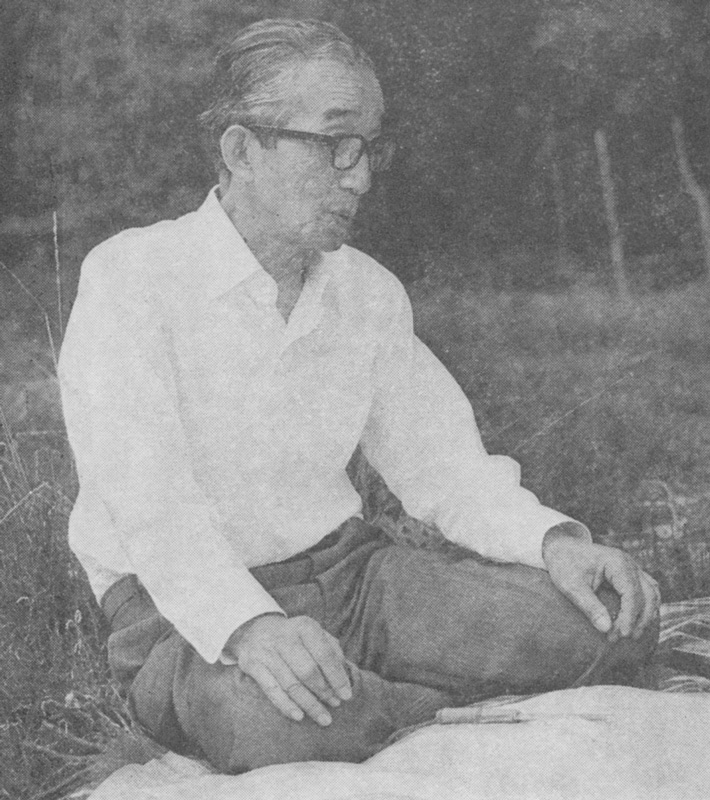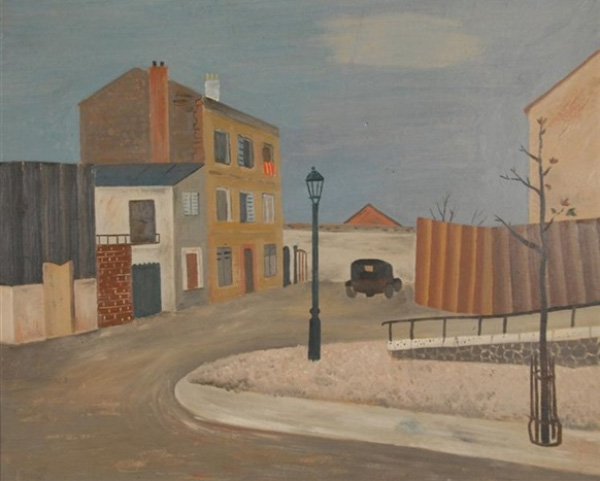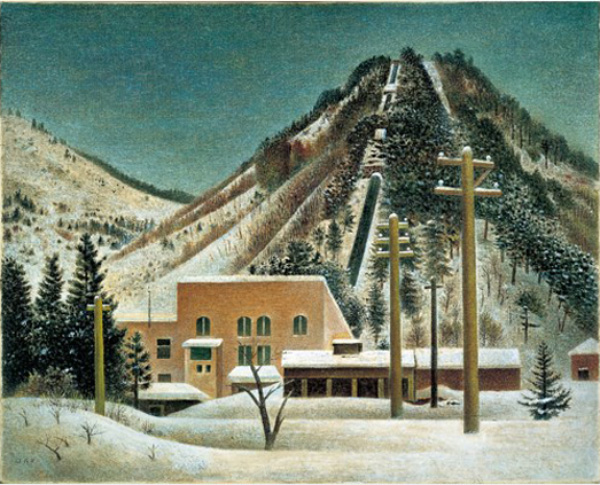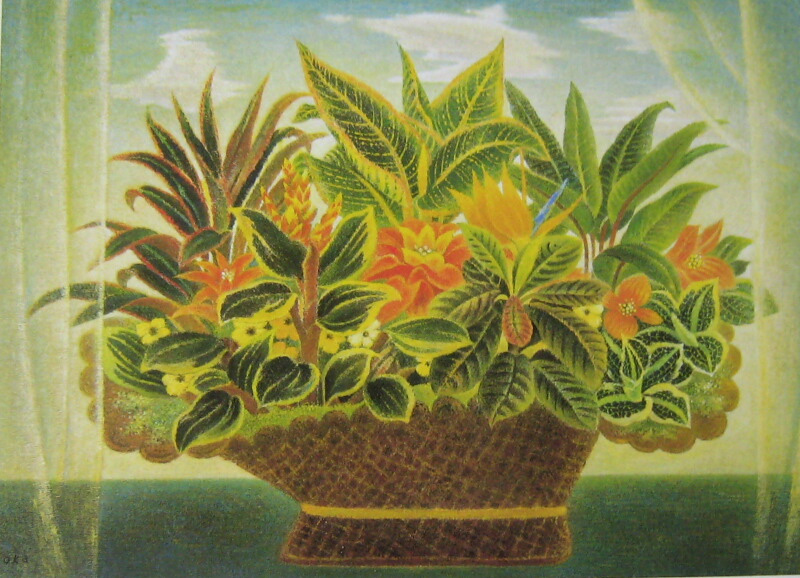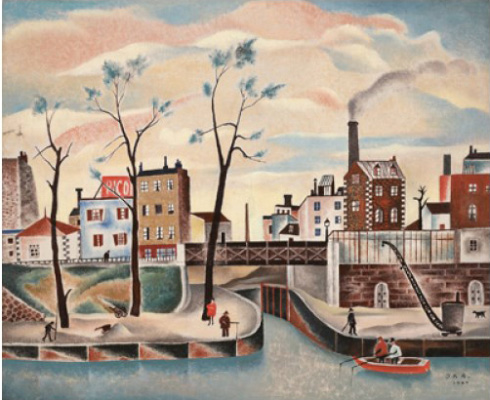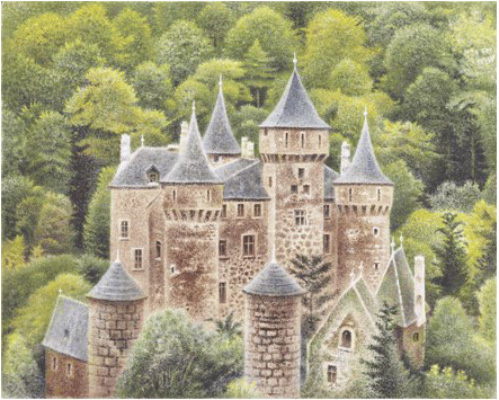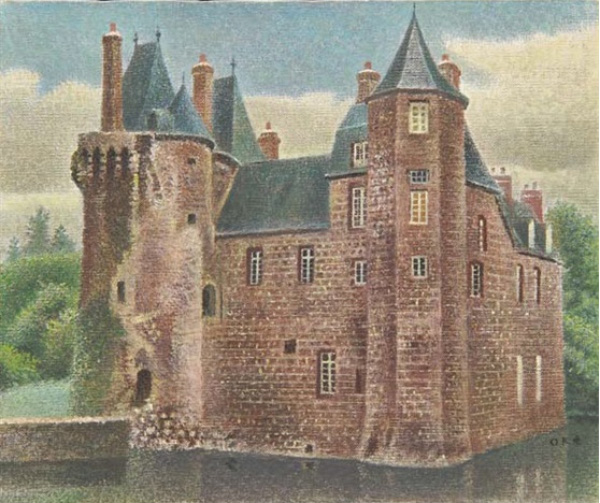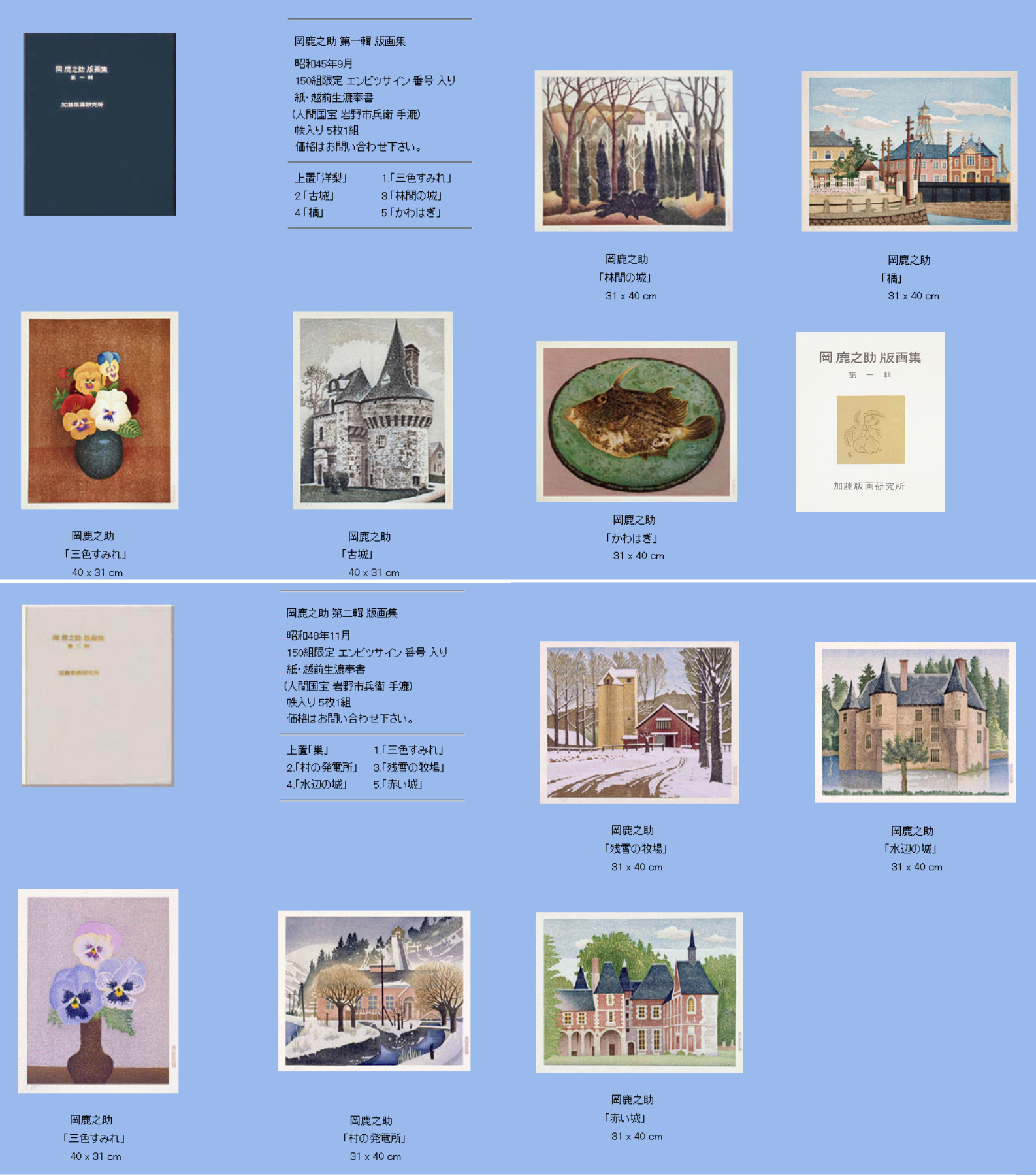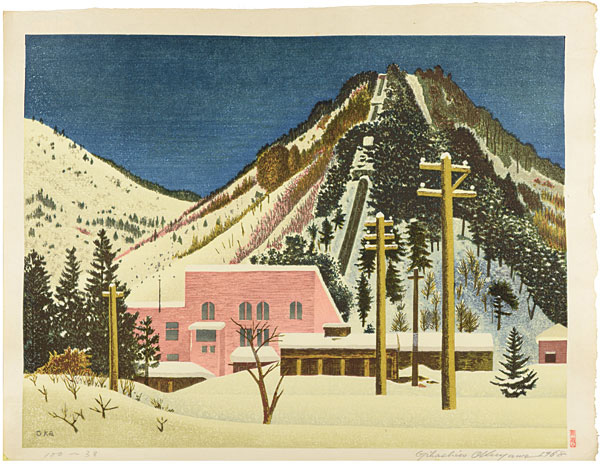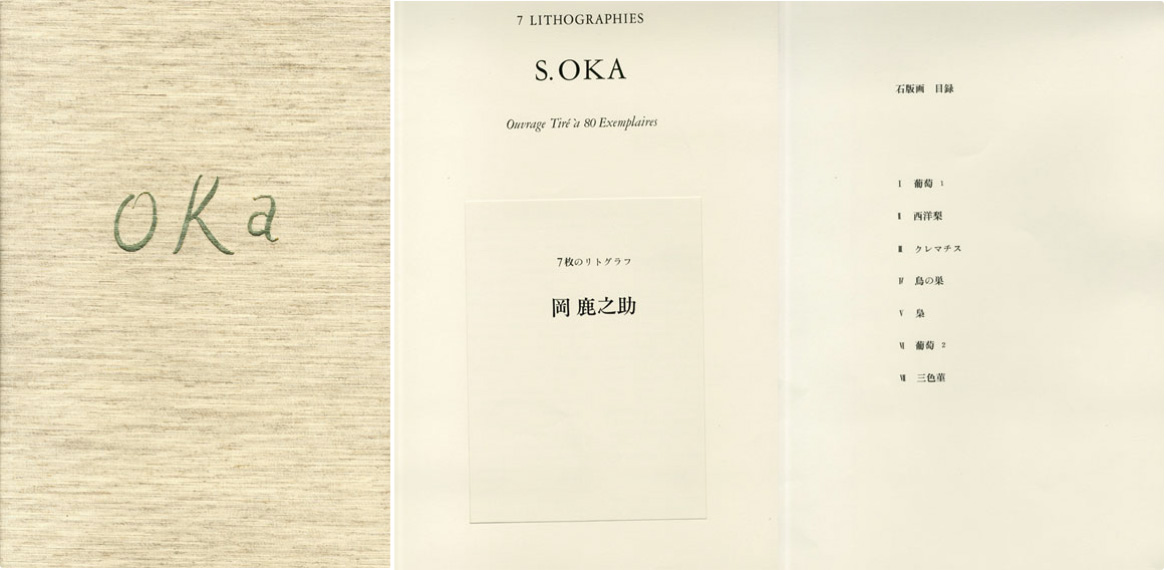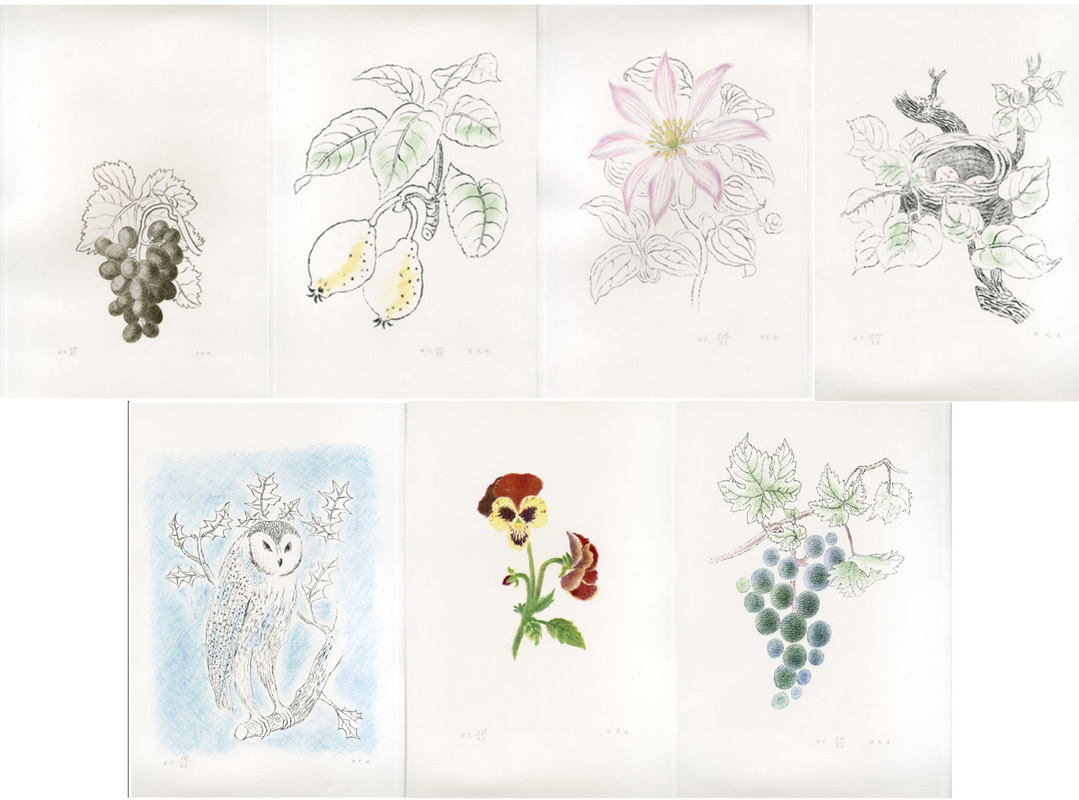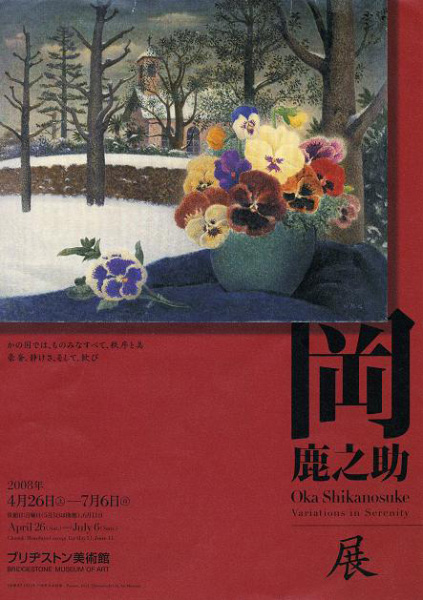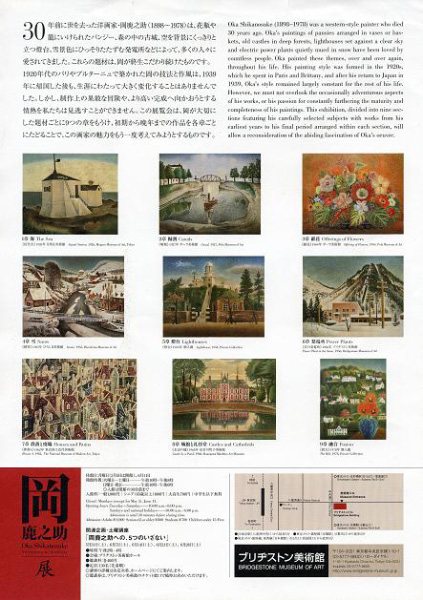Pansies, 1973
(after a c. 1967 oil painting by Oka Shikanosuke)
IHL Cat. #2465
Biography
Bank of the Seine, 1927 60 x 73 cm oil on canvas Bridgestone Museum of Art | Oka’s long stay in France was instrumental in forming his artistic style and he was most influenced by the French naïve Post-Impressionist painter Henri Rousseau (1844-1910) whose work he would later help to popularize in Japan. Much of Oka’s work can be seen as a tribute to Rousseau, whose “poetic sentiment” he incorporated. Other cited influences on his work are the the French symbolist painter Odilon Redon (1840-1916) and the French Post-Impressionist Pierre Bonnard (1867-1947). While influenced by these artists, he was praised for his “wise and careful” borrowing of “only the principles behind their paintings”4 and maintaining a “delicate Japan-like sensibility”5 in his work. As with many of the other Japanese artists in France he associated with members of the Ecole de Paris, including its only Japanese member, |
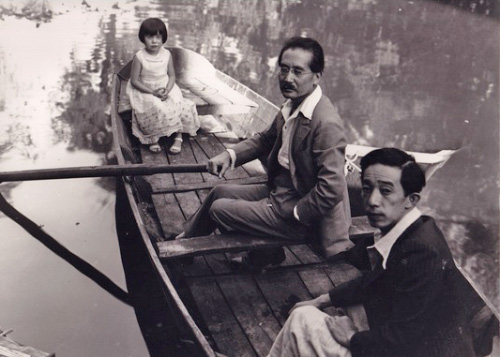
Returning to France several times after the War, much of his work was based on the old chateaus and churches he'd see traveling through France.
A Castle in the Forest, 1973
oil on canvas
28 3/4 x 35 3/4 in. (73 x 90.8 cm)
Menard Art Museum
Waterside Castle, 1973
oil on canvas,
15 x 17.9 in. (38 x 45.5 cm)
My subject matter has been largely composed of temples, light houses, and landscapes in which no human beings are seen. Now I want to paint landscapes which are fully animated. Even if there is no trace of human figures, I want my landscape and buildings to be occupied by living souls.
Usually my subject evolves in my mind in much the same manner as a stew is slowly cooked. As in cooking, timing is important - it should be neither too long nor too short. Therefore the constant engagement of "croquis" is needed in my head. As soon as I construct my imaginary subject, my painting is about 90 percent completed. Drawing functions a a memo, in which there are letters as well as lines inscribed. But I feel I should not translate my memos = that is, drawings - into a tableau, since that amounts only to copying. A painting should not become a mere finished copy of one's design.
I am presently trying to reduce my number of colors in order to conserve my tender feelings toward my subject. Brown in all its shades is most fitting to my personality, and I want to develop various color schemes using browns.
While Merritt credits Oka with creating “lithographs and woodcuts of flowers, birds, and fish”8 it seemslike all the woodcuts were created by print makers after Oka’s works. Both the print artist and printer Okuyama Gihachirō (1907-1981) and the Kato PrintInstitute [Kato hanga kenkyūjo 加藤版画研究所]9 created prints after famous Oka paintings, with the Kato Print Instituteissuing a series of prints in two portfolios in the years 1970 and 1973, shown below. Okuyama seemsto have created only one print based on an Oka painting, also shown below. The only lithographs of the artist’s thatI’m aware of are two multiple print portfolios, one issued in the mid-1950s and listed, but not illustrated, in the collection of The National Museum of Modern Art, Tokyo (P0004-010) andthe other containing seven prints published by Suita Bōeki in 1974 and also shown below.
Woodblock Prints
Kato Print Institute
top
岡鹿之助 第一輯 版画集昭和45年9月 [September 1970]150組限定 エンピツサイン 番号 入り紙・越前生漉奉書(人間国宝 岩野市兵衛 手漉)帙入り 5枚1組価格はお問い合わせ下さい。[洋梨」Pears [folio cover]1.「三色すみれ」Tri-color Violets...2.「古城」Old Fortress]3.「林間の城」[Castle in the Forest]...4.「橋」Bridge5.「かわはぎ」Filefishbottom
.岡鹿之助 第二輯 版画集
昭和48年11月[December 1973]
150組限定 エンピツサイン 番号 入り
紙・越前生漉奉書
(人間国宝 岩野市兵衛 手漉)
帙入り 5枚1組
価格はお問い合わせ下さい
上置「巣」Nest
1.「三色すみれ」Tri-color Violets
2.「村の発電所」Village Power Station
3.「残雪の牧場」Remaining Snow at the Farm
4.「水辺の城」Waterside Castle
5.「赤い城」Red Castle
Lithographs
Bridgestone Museum of Art - Shikanosuke Oka: Variations inSerenity 26 April - 6 July 2008
"This exhibition spans the career of the figurativepainter Oka Shikanosuke with works from his early years to his very lastpaintings. To display his oeuvre, the works have been grouped along nine themesthat continued to occupy Oka during his artistic career. The painting stylethat Oka developed during the 1920s while living and working in Paris andBrittany would not change dramatically throughout his life. However, hisintrepid pursuit of adventurous new artistic challenges and his passion forconsistently higher levels attainment in his painting represent achievementsthat cannot be ignored. Exploring these elements in this exhibition gives us afine opportunity to rediscover the art of Oka Shikanosuke."
1 website of the Bridgestone Museum of Art http://www.bridgestone-museum.gr.jp/en/collection/artist1/
3 "Contemporary Artists in Japan: Oka Shikanosuke and Wakita Kazu," KAZU Ogawa, Masataka appearing in, Japan Quarterly 23.1 (Jan 1, 1976): 75.
7 About the Order of Culture (Bunka-Kunsho) - "The Order of Culture is a Japanese Order presented to practitioners of the arts and sciences by the Emperor of Japan himself. The Order is reserved for only the most influential people that have contributed significantly to the cultural history of Japan."
http://www.hotelokura.co.jp/tokyo/en/material/pdf/press_release/hot_0608.pdf
9 founded by Katō Junji
